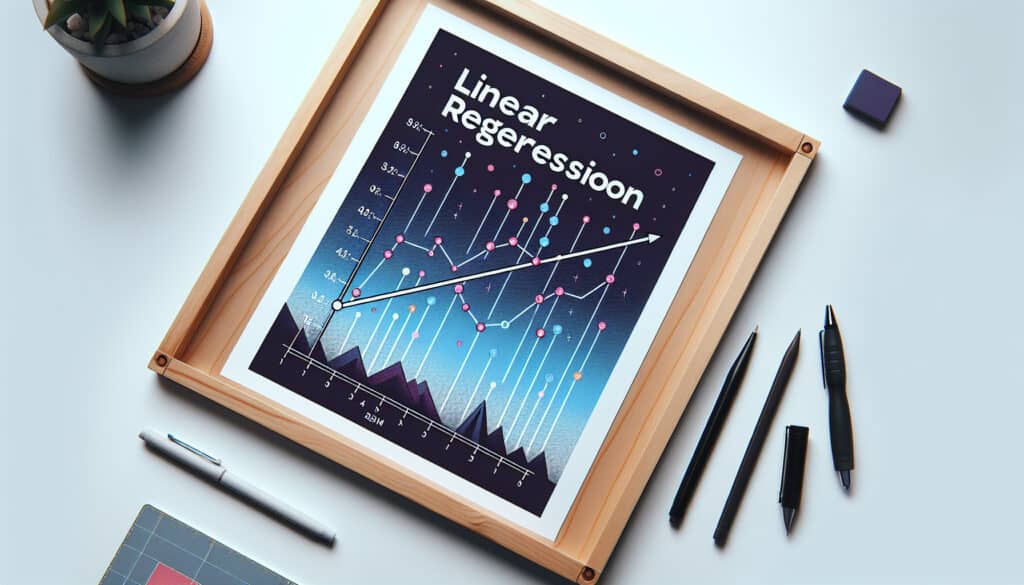To model the relationship between a dependent variable and one or more independent variables.
- المنهجيات: بيئة العمل
الانحدار الخطي

الانحدار الخطي
- التعلّم الآلي, خوارزميات الصيانة التنبؤية, تحسين العمليات, مراقبة الجودة, إدارة الجودة, التحليل الإحصائي, التحكم في العمليات الإحصائية (SPC)
الهدف:
كيفية استخدامه:
- Used to predict an outcome or forecast future values based on historical data. In manufacturing, it can be used to predict equipment failure based on operating conditions. In marketing, it can forecast sales based on advertising spend.
الايجابيات
- Simple to understand and implement; Provides a clear, quantifiable relationship between variables.
سلبيات
- Assumes a linear relationship between variables, which may not always be the case; Sensitive to outliers.
الفئات:
- الاقتصاد, الهندسة, الجودة
الأفضل لـ
- Forecasting sales, predicting product demand, or identifying factors that influence production quality.
Linear regression can be effectively leveraged across various phases of product design and development, particularly during the analysis and testing stages when historical relationships between variables are explored. In the automotive industry, for instance, linear regression aids in forecasting maintenance needs by analyzing past repair data against variables such as average vehicle mileage and driving conditions. In the realm of software development, this methodology might be utilized to predict user engagement levels based on previous usage patterns and marketing efforts, allowing teams to make data-driven decisions regarding feature enhancements. In pharmaceuticals, it serves as an analytical tool for understanding the correlation between dosage levels and responses in clinical trials, which can optimize product formulations. Stakeholders such as data analysts, project managers, and marketing teams typically initiate and utilize linear regression in collaborative settings, where statistical software can assist in managing data sets. The clarity and ease of interpretation of linear regression results empower teams to communicate findings effectively, thus fostering informed decision-making across different departments, from R&D to sales and logistics, ensuring a more aligned approach to meeting market demands and improving product quality.
الخطوات الرئيسية لهذه المنهجية
- Identify the dependent and independent variables relevant to the prediction.
- Formulate the linear regression equation based on the established variables.
- Fit the model to the historical data using a method such as least squares.
- Evaluate the model's fit using metrics such as R-squared and p-values.
- Assess the residuals for randomness and normality to ensure model validity.
- Use the validated model to make predictions on new or future data.
- Regularly update the model with new data to improve accuracy over time.
نصائح للمحترفين
- Regularly update your linear regression model with new data to capture changing trends and maintain accuracy in predictions.
- Utilize interaction terms in your regression model to explore relationships between variables that might not be linear, revealing deeper insights.
- Implement k-fold cross-validation to assess your model's robustness and prevent overfitting, ensuring reliable forecasts in varied scenarios.
لقراءة عدة منهجيات ومقارنتها, نوصي باستخدام
> مستودع المنهجيات الشامل <
مع أكثر من 400 منهجية أخرى.
نرحب بتعليقاتكم على هذه المنهجية أو المعلومات الإضافية على قسم التعليقات أدناه ↓، وكذلك أي أفكار أو روابط متعلقة بالهندسة.
السياق التاريخي
1949
1950
1950
1960
1960
1960
1960
1940
1950
1950
1958
1960
1960
1960
1960
(إذا كان التاريخ غير معروف أو غير ذي صلة، على سبيل المثال "ميكانيكا الموائع"، يتم تقديم تقدير تقريبي لظهوره الملحوظ)















منشورات ذات صلة
جدول الإنتاج الرئيسي (MPS)
التخصيص الشامل
قمع التسويق
التدقيق التسويقي
مؤشر MAPO (حركة ومساعدة مرضى المستشفيات)
تخطيط موارد التصنيع (MRP II)